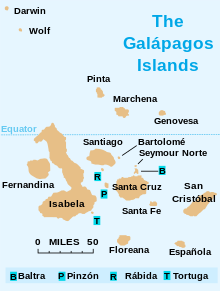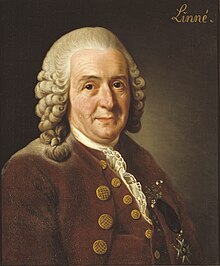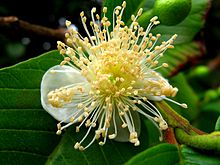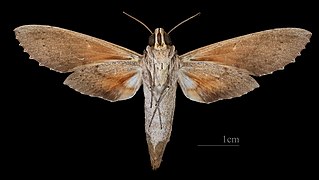Erinnyis ello
| Erinnyis ello | |
|---|---|
 | |
| Classificazione scientifica | |
| Dominio | Eukaryota |
| Regno | Animalia |
| Sottoregno | Eumetazoa |
| Superphylum | Protostomia |
| Phylum | Arthropoda |
| Subphylum | Tracheata |
| Superclasse | Hexapoda |
| Classe | Insecta |
| Sottoclasse | Pterygota |
| Coorte | Endopterygota |
| Superordine | Oligoneoptera |
| Sezione | Panorpoidea |
| Ordine | Lepidoptera |
| Sottordine | Glossata |
| Infraordine | Heteroneura |
| Divisione | Ditrysia |
| Superfamiglia | Bombycoidea |
| Famiglia | Sphingidae |
| Sottofamiglia | Macroglossinae |
| Tribù | Dilophonotini |
| Sottotribù | Dilophonotina |
| Genere | Erinnyis |
| Specie | E. ello |
| Nomenclatura binomiale | |
| Erinnyis ello (Linnaeus, 1758) | |
| Sinonimi | |
|
Anceryx ello | |
| Sottospecie | |
| |
Erinnyis ello (Linnaeus, 1758)[1] è un lepidottero appartenente alla famiglia Sphingidae, diffuso in America Settentrionale, Centrale e Meridionale.
Descrizione
[modifica | modifica wikitesto]Adulto
[modifica | modifica wikitesto]Rispetto a tutte le altre specie di Erinnyis è facilmente distinguibile per la presenza della tipica campitura arancione nella parte basale dell'ala posteriore, oltre che per il vistoso alternarsi di bande nere e grigie pallide sulla parte dorsale dell'addome.[1][2][3]
Nel maschio l'ala anteriore risulta grigia sulla pagina superiore, con una banda mediana nera di larghezza variabile, che corre dalla regione basale fino all'apice. Al contrario, nella femmina l'ala anteriore si mostra di un grigio pallido alquanto uniforme, e la banda mediana con gli altri disegni sono presenti soltanto in tracce.[3][4]
Le antenne sono filiformi, lievemente uncinate alle estremità, ed hanno una lunghezza pari a circa la metà della costa.[2]
Nel genitale maschile, i lobi dell'uncus hanno la stessa lunghezza di quelli dello gnathos; questi ultimi appaiono sottili, con le punte ricurve, e non si spingono oltre le terminazioni ottuse dei lobi dell'uncus. L'edeago risulta molto simile a quello di E. crameri.[3]
È probabilmente la sfinge più comune del Nuovo Mondo.[2]
L'apertura alare varia da 75 a 88 mm.[5]
-
Erinnyis ello ello ♀
-
Erinnyis ello ello ♀ △
Larva
[modifica | modifica wikitesto]Il bruco maturo può avere due forme: una è verde chiaro, con un paio di bande biancastre laterali che corrono dai segmenti toracici a quello anale; l'altra è bruna o olivastra, con piccole striature grigiastre ed una macchia marrone scuro a forma di scudo sul torace. Le pseudozampe mostrano una o più bande nere longitudinali.[2][5]
Pupa
[modifica | modifica wikitesto]Le crisalidi sono anoiche, lucide e nere, con diversi disegni arancioni, ed un cremaster non molto sviluppato; si rinvengono entro bozzoli posti a scarsa profondità nella lettiera del sottobosco.[2][5]

Distribuzione e habitat
[modifica | modifica wikitesto]L'areale di questa specie si estende sia sull'Ecozona neartica, sia su quella neotropicale, comprendendo l'Argentina (Catamarca, Cordoba, Corrientes, Jujuy, La Rioja, Misiones, Salta, Tucumán), la Bolivia (Beni, Cochabamba, La Paz, Santa Cruz), il Brasile (Amazonas, Bahia, Maranhão, Minas Gerais, Pará, Paraná, Piauí, Rio Grande do Sul, San Paolo, Santa Catarina, Tocantins), il Canada, il Cile, la Colombia (Meta), la Costa Rica, Cuba, l'Ecuador, le Galápagos (locus typicus della sottospecie E. e. encantada), la Giamaica, la Guadalupa, Haiti, la Martinica, il Messico, il Paraguay, il Perù, la Repubblica Dominicana, gli Stati Uniti meridionali (Arizona, California, Florida, Nevada, Texas) e il Venezuela[2][3][5][6][7][8][9][10][11]
L'habitat è rappresentato da foreste tropicali e sub-tropicali, dal livello del mare fino a zone collinari.[5]
Biologia
[modifica | modifica wikitesto]
Durante l'accoppiamento, le femmine richiamano i maschi grazie ad un feromone rilasciato da una ghiandola, posta all'estremità dell'addome.[5][9]
Periodo di volo
[modifica | modifica wikitesto]Gli adulti sono rinvenibili tutto l'anno nella fascia tropicale e nella Florida meridionale.[5]
Alimentazione
[modifica | modifica wikitesto]Gli adulti suggono il nettare di fiori di varie specie, tra cui Saponaria officinalis L. (Saponaria, Caryophyllaceae) e Asystasia gangetica (L.) T.Anderson (Acanthaceae).[5]
I bruchi parassitano le foglie di membri di varie famiglie, tra cui:[5][7][9]
- Carica papaya L. (Papaia o Papaya) (Caricaceae)
- Cnidoscolus angustidens Torr. (Euphorbiaceae)
- Dipholis salicifolia (L.) A.DC. (Sapotaceae)
- Euphorbia heterophylla L. (Euphorbiaceae)
- Euphorbia pulcherrima Willd. ex Klotzsch (Poinsettia o Stella di Natale) (Euphorbiaceae)
- Euphorbia viminea Hook.f. (Euphorbiaceae)
- Hippomane mancinella L. (Euphorbiaceae)
- Manilkara bahamensis (Baker) H. J. Lam & A. Meeuse (Sapotaceae)
- Psidium guajava L. (Guava) (Myrtaceae)
- Sideroxylon celastrinum (Kunth) T.D.Penn (Sapotaceae)
Parassitismo
[modifica | modifica wikitesto]I bruchi sono soggetti a parassitismo da parte degli Imenotteri Microplitis espinachi Walker, 2003 e M. figueresi Walker, 2003 (fam. Braconidae).[12]







Tassonomia
[modifica | modifica wikitesto]Sottospecie
[modifica | modifica wikitesto]Al momento vengono distinte due sottospecie.[2][3][5][7]
- Erinnyis ello ello (Linnaeus, 1758) - Syst. Nat. (Edn 10) 1 : 491 - Locus typicus: India (in errore)[1]
- Erinnyis ello encantada Kernbach, 1962 - Opusc. zool.. 63: 10 - Locus typicus: Galápagos[6]
La sottospecie E. e. encantada risulta leggermente più piccola e più pallida. Nell'ala anteriore del maschio, la banda scura longitudinale risulta meno pronunciata, così da farlo assomigliare alla femmina. Il genitale è praticamente identico a quello di E. e. ello.[3]
-
Erinnyis ello encantada ♂
-
Erinnyis ello encantada ♂ △
-
Erinnyis ello encantada ♀
-
Erinnyis ello encantada ♀△
Sinonimi
[modifica | modifica wikitesto]Sono stati riportati cinque sinonimi:[3][7]
- Anceryx ello Walker, 1856 - List Spec. Lepid. Insects Colln Br. Mus. 8: 224 (sinonimo eterotipico)[13]
- Dilophonota ello Godman & Salvin, 1881 - Biol. centr.-amer., Lep. Heterocera 1: 19 (sinonimo eterotipico)[14]
- Erinnyis cinifera Zikán, 1934 - Rev. Ent. Rio de Janeiro. 4 (sinonimo eterotipico)
- Erinnyis ello omorfia (Mooser, 1942) - A. Ist. Biol. Univ. nac. Mexico (Zool.) 13 (sinonimo eterotipico)
- Sphinx ello Linnaeus, 1758 - Syst. Nat. (Edn 10) 1 : 491 (sinonimo omotipico e basionimo)[1]
Note
[modifica | modifica wikitesto]- ^ a b c d Linnaeus, Systema Naturae per Regna Tria Naturae, Secundum Clases, Ordines, Genera, Species, cum Characteribus, Differentiis, Symonymis, Locis. Tomis I. 10th Edition Syst. Nat. (Edn 10) 1 : 491, 1758.
- ^ a b c d e f g Bernard D'Abrera, Sphingidae Mundi. Hawk Moths of the World. Based on a Checklist by Alan Hayes and the collection he curated in the British Museum (Natural History), 1ª ed., Faringdon, Oxon., SN7 7DR United Kingdom, E.W. Classey Ltd., 1986, pp. 98-99, ISBN 0-86096-022-6.
- ^ a b c d e f g CATE Creating a Taxonomic e-science - Erinnyis ello ello, su cate-sphingidae.org. URL consultato il 7 agosto 2011 (archiviato dall'url originale il 9 novembre 2012).
- ^ Annals of the Entomological Society of America, Study of Caterpillars of Sphingidae, vol. 4, Columbus, Ohio (USA), Herbert Osborn, marzo 1911, p. 275. URL consultato il 7 agosto 2011.
- ^ a b c d e f g h i j Silkmoths - Erinnyis ello ello, su silkmoths.bizland.com. URL consultato il 7 agosto 2011 (archiviato dall'url originale il 12 maggio 2015).
- ^ a b c K. Kernbach, Die Schwärmer einiger Galapagos-Inseln (Lep. Sphingidae). Opusc. zool. Münch., 63, 1-19, 1962.
- ^ a b c d Funet, su ftp.ipv6.funet.fi. URL consultato il 7 agosto 2011 (archiviato dall'url originale il 29 maggio 2014).
- ^ CATE Creating a Taxonomic e-Science - Erinnyis ello encantada, su cate-sphingidae.org. URL consultato il 7 agosto 2011 (archiviato dall'url originale il 23 settembre 2015).
- ^ a b c Silkmoths - Erinnyis ello encantada, su silkmoths.bizland.com. URL consultato il 7 agosto 2011 (archiviato dall'url originale il 22 novembre 2008).
- ^ (EN, ES) Ian J. Kitching, Julieta Ledezma & Joaquín Baixeras, An Annotated Checklist of the Sphingidae of Bolivia (Insecta: Lepidoptera) - Una lista comentada de los Sphingidae de Bolivia (Insecta: Lepidoptera), in Gayana, vol. 65, n. 2, 2001, pp. 79-111, ISSN 0717-652X. URL consultato il 7 agosto 2011.
- ^ INRA, su inra.fr. URL consultato il 7 agosto 2011 (archiviato dall'url originale il 2 luglio 2007).
- ^ D.H. Janzen, A.K. Walker, J.B. Whitfield, G. Delvare and I.D. Gauld, Host specificity and Hyperparasitoids of Three New Costa Rican Species of Microplitis Foerster (Hymenoptera: Braconidae: Microgastrinae), Parasitoids of Sphingid Caterpillars, in Journal of Hymenoptera Research, vol. 12, n. 1, 2003, pp. 42-76. URL consultato il 7 agosto 2011.
- ^ Francis Walker, List of the Specimens of Lepidopterous Insects in the Collection of the British Museum List Spec. Lepid. Insects Colln Br. Mus. 8: 1-271, 1856.
- ^ Godman & Salvin, Biologia Centrali-Americana; or Contributions to the Knowledge of the Fauna of Mexico and Central America. Zoology. Lepidoptera. Heterocera Biol. centr.-amer., Lep. Heterocera 1: 1-490, 3: pl. 1-101, 1881.
Bibliografia
[modifica | modifica wikitesto]- Bellotti AC, Arias B, Guzmán OL (1992) Biological control of the cassava hornworm Erinnyis ello (Lepidoptera: Sphingidae). Fla Entomol 75:506–515.
- Boisduval, 1859 - (comunicazioni) Bull. Soc. ent. Fr. (3) 7 : cliv-clvii,[154-157],clvii-clviii,[157-158].
- Boisduval, 1870 - Considerations sur des Lépidoptères envoyés du Guatemala à M. de l'Orza Considérations Lépid. Guatemala: 100pp.
- Boisduval, [1875] - Histoire Naturelle des Insectes. Species Général des Lépidoptéres Hétérocéres. Tome Premier. Sphingides, Sésiides, Castnides Hist. nat. Ins., Spec. gén. Lépid. Hétérocères, 1 : 1-568, pl. 1-11.
- Burmeister, 1878 - Description physique de la République Argentine d'après des observations personelles et étrangeres. 5. Lépidoptères. Première partie. Contenant les diurnes, crépusculaires et bombycoïdes Descr. phys. Rép. Arg. 5: vi, 526pp.
- Butler, 1881 - Notes on some North American Lepidoptera Papilio 1 (7): 103-106, (8): 128-132, (9): 168-171, (11): 220-223.
- (EN) Capinera, J. L. (Ed.), Encyclopedia of Entomology, 4 voll., 2nd Ed., Dordrecht, Springer Science+Business Media B.V., 2008, pp. lxiii + 4346, ISBN 978-1-4020-6242-1, LCCN 2008930112, OCLC 837039413.
- Carcasson, R.H. & J.B. Heppner, 1996 - Sphingoidea. 118. Sphingidae. In: Heppner, J.B. (Ed.) Atlas of Neotropical Lepidoptera, Checklist: 4B. Drepanoidea - Bombycoidea - Sphingoidea. Association of Tropical Lepidoptera & Scientific Publishers, Gainesville. 87pp
- Cramer, [1777] - Uitlandsche Kapellen (Papillons exotiques) Uitl. Kapellen 2 (9-16): 1-152, pl. 97-192 (1777)
- Cramer, [1779]; Cramer, [1780] - Uitlandsche Kapellen (Papillons exotiques) Uitl. Kapellen 3 (17-21): 1-104, pl. 193-252 (1779) (22): 105-128, pl. 253-264 ([1780]) (23-24): 129-176, pl. 265-288 (1780)
- Drury, [1770] - Illustrations of natural history; wherein are exhibited ... Illust. Nat. Hist. Exot. Insects 1 : 1-130, pl. 1-50 (1770), (1773)
- Edwards H., 1882 - New species of Heterocera Papilio 2 (1) : 9-15
- Fabricius, 1775 - Systema Entomologiae, sistens Insectorum Classes, Ordines, Genera, Species, Adiectis Synonymis, Locis, Descriptionibus, Observationibus. Syst. Ent.: 832pp
- Geyer, [1829] - Sammlung exotischer Schmetterlinge, Vol. 3 ([1827] - [1838]) in Hübner, Samml. exot. Schmett. 3 : pl. [9], [11], [21], [26-27], [32], [43], [45] (1827), : pl. [7], [13], [35], [42] (1828), : pl. [20], [22], [37-38] (1829), : pl. [17], [24], [41], [49] (1830), : pl. [30] (1831), : pl. [25], [28], [31], [44], [50-51] (1832), : pl. [5-6], [14-16], [29], [48], [52] (1833), : pl. [1], [12], [18] (1834), : pl. [2-4], [10], [19], [23], [39], [46] (1835), : pl. [40] (1836-1837), : pl. [8], [33-34], [36], [47], [53] (1838)
- Grote, 1865 - Notes on Cuban Sphingidae Proc. Ent. Soc. Philad. 5 : 33-84
- Grote, 1867 - Remarks on the Sphingidae of Cuba, and Description of a New Species of Ambulyx from Brazil Ann. Lyc. nat. Hist. N.Y. 8 : 195-207
- Grote & Robinson, 1865 - A synonymical catalogue of North American Sphingidae, with notes and descriptions Proc. Ent. Soc. Philad. 5 : 149-193, pl. 1-3
- Grote & Robinson, 1868 - Notes on the North American Lepidoptera in the British Museum and described by Mr. Francis Walker Trans. amer. ent. Soc. 2 : 67-88
- Haxaire, J. & J.-Y. Rasplus, 1987 - Contribution à la connaissance des Sphingidae de Guyane Française. 1re partie [Lep.]. Bull. Soc. Ent. Fr. 91: 275-285
- Hübner, [1819] - Verzeichniss bekannter Schmettlinge, 1816-[1826] Verz. bek. Schmett. (1): [1-3], 4-16 (1816) (2): 17-32 (1819) (3): 33-48 (1819) (4): 49-64 (1819) (5): 65-80 (1819) (6): 81-96 (1819) (7): 97-112 (1819) (8): 113-128 (1819) (9): 129-144 (1819) (10): 145-160 (1819) (11): 161-176 (1819) (12): 177-192 (1820) (13): 193-208 (1820) (14): 209-224 (1821) (15): 225-240 (1821) (16): 241-256 (1821) (17): 257-272 (1823) (18): 273-288 (1823) (19): 289-304 (1823) (20): 305-320 (1825) (21): 321-336 (1825) (22): 337-352 (1825) (23-27): 353-431 ([1825])
- Kitching & Cadiou, 2000 - Hawkmoths of the World; An annotated and illustrated revisionary checklist (Lepidoptera: Sphingidae). 256 pp.; Comstock Publishing Associates - Ithaca; ISBN 978-0-8014-3734-2
- (EN) Kükenthal, W. (Ed.), Handbuch der Zoologie / Handbook of Zoology, Band 4: Arthropoda - 2. Hälfte: Insecta - Lepidoptera, moths and butterflies, a cura di Kristensen, N. P., collana Handbuch der Zoologie, Fischer, M. (Scientific Editor), Teilband/Part 35: Volume 1: Evolution, systematics, and biogeography, Berlino, New York, Walter de Gruyter, 1999 [1998], pp. x + 491, ISBN 978-3-11-015704-8, OCLC 174380917.
- Landman Wijbren, 2001 - The Complete Encyclopedia of Moths. 272 pp.; Grange Books; ISBN 1-84013-409-7
- Lewis, H.L., 1974 - Butterflies of the World; ISBN 0-245-52097-X
- Lucas, 1857 - Historia física política y natural de la Isla de Cuba. (Lepidópteros) in Sagra, Hist. fis. pol. nat. Isla Cuba (2) 7 : 474-750, pl. 14-17 (French Edition) (1857), : 202-313, pl. 14-17 (1857)
- Opler Paul, Pavulaan Harry, Stanford Ray, Pogue Michael - Butterflies and Moths of North America; Mountain Prairie Information Node
- Opler & Warren, 2003 - Butterflies of North America. 2. Scientific Names List for Butterfly Species of North America, north of Mexico.
- Schaus, 1898 - Note on American Sphingidae. - II Ent. News. 9 (6) : 134-136
- (EN) Scoble, M. J., The Lepidoptera: Form, Function and Diversity, seconda edizione, London, Oxford University Press & Natural History Museum, 2011 [1992], pp. xi, 404, ISBN 978-0-19-854952-9, LCCN 92004297, OCLC 25282932.
- Sepp, [1848] - Natuurlijke Historie van Surinaamsche Vlinders, naar het leven geteekend. Papillons de Surinam dessinés d'après nature Surinaam. Vlinders 1 (1): 1-16, pl. 1-4 ([1829]), 1 (2): 17-24, pl. 5-8 ([1829]), 1 (3): 25-32, pl. 9-12 ([1830]), 1 (4): 33-40, pl. 13-16 ([1830]), 1 (5): 41-48, pl. 17-20 ([1832]), 1 (6): 49-56, pl. 21-24 ([1832-1840]), 1 (7): 57-64, pl. 25-28 ([1832-1840]), 1 (8): 65-72, pl. 29-32 ([1840]), 1 (9): 73-80, pl. 33-36 ([1841]), 1 (10): 81-88, pl. 37-40 ([1841]), 1 (11): 89-96, pl. 41-44 ([1842]), 1 (12): 97-104, pl. 45-48 ([1842]), 1 (13): i-viii, 105-108, pl. 49-50 ([1843]), 2 (13): 109-112, pl. 51-52 ([1843]), 2 (14): 113-120, pl. 53-56 ([1843]), 2 (15): 121-128, pl. 57-60 ([1844]), 2 (16): 129-136, pl. 61-64 ([1844]), 2 (17): 137-144, pl. 65-68 ([1845]), 2 (18): 145-152, pl. 69-72 ([1845]), 2 (19): 169-176, pl. 73-76 ([1845]), 2 (20): 177-184, pl. 77-80 ([1846]), 2 (21): 185-192, pl. 81-84 ([1847]), 2 (22): 193-200, pl. 85-88 ([1846]), 2 (23): 201-208, pl. 89-92 ([1847]), 2 (24): 209-216, pl. 93-96 ([1847]), 2 (25): i-iv, 217-224, pl. 97-100 ([1847]) , 3 (26): 225-232, pl. 101-104 ([1848]), 3 (27): 233-240, pl. 105-108 ([1848]), 3 (28): 241-248, pl. 109-112 ([1848]), 3 (29): 249-256, pl. 113-116 ([1849]), 3 (30): 257-264, pl. 117-120 ([1849]), 3 (31): 265-272, pl. 121-124 ([1850]), 3 (32): 273-280, pl. 125-128 ([1850]), 3 (33): 281-288, pl. 129-132 ([1851]), 3 (34): 289-296, pl. 133-136 ([1851]), 3 (35): 297-304, pl. 137-140 ([1851]), 3 (36): 305-312, pl. 141-144 ([1851]), 3 (37): 313-320, pl. 145-148 ([1852]), 3 (38): i-viii, 321-328, pl. 149-152 ([1852])
- (EN) Stehr, F. W. (Ed.), Immature Insects, 2 volumi, seconda edizione, Dubuque, Iowa, Kendall/Hunt Pub. Co., 1991 [1987], pp. ix, 754, ISBN 978-0-8403-3702-3, LCCN 85081922, OCLC 13784377.
- Swainson, 1823 - Zoological illustrations, or original figures and descriptions of new, rare, or interesting animals, selected chiefly from the classes of ornithology, entomology, and conchology, and arranged on the principles of Cuvier and other modern zoologists Zool. Illustr. (1) 1: pl. 1-18 (1820), 1: pl. 19-66 (1821), 2: pl. 67-83 (1821), 2: pl. 84-119 (1822), 3: pl. 120-134 (1822), 3: pl. 135-182 (1823)
- Tuttle James P., 2007 - The Hawkmoths of North America, A Natural History Study of the Sphingidae of the United States and Canada. The Wedge Entomological Research Foundation, Washington DC; ISBN 978-0-9796633-0-7.
Voci correlate
[modifica | modifica wikitesto]- Erinnyis alope
- Erinnyis crameri
- Erinnyis guttularis
- Erinnyis impunctata
- Erinnyis lassauxii
- Erinnyis obscura
- Erinnyis oenotrus
- Erinnyis pallida
- Erinnyis stheno
- Erinnyis yucatana
Altri progetti
[modifica | modifica wikitesto] Wikimedia Commons contiene immagini o altri file su Erinnyis ello
Wikimedia Commons contiene immagini o altri file su Erinnyis ello Wikispecies contiene informazioni su Erinnyis ello
Wikispecies contiene informazioni su Erinnyis ello
Collegamenti esterni
[modifica | modifica wikitesto]- (EN) Butterflies and Moths of North America URL consultato il 7 agosto 2011, su butterfliesandmoths.org.
- (EN) CATE Creating a Taxonomic eScience - Erinnyis ello ello URL consultato il 7 agosto 2011, su cate-sphingidae.org. URL consultato il 6 agosto 2011 (archiviato dall'url originale il 9 novembre 2012).
- (EN) CATE Creating a Taxonomic eScience - Erinnyis ello encantada URL consultato il 7 agosto 2011 [collegamento interrotto], su cate-sphingidae.org.
- (EN) INRA URL consultato il 7 agosto 2011, su inra.fr. URL consultato il 6 agosto 2011 (archiviato dall'url originale il 2 luglio 2007).
- (EN) Funet.fi URL consultato il 7 agosto 2011, su ftp.ipv6.funet.fi. URL consultato il 6 agosto 2011 (archiviato dall'url originale il 29 maggio 2014).
- (EN) ITIS Catalogue of Life 2011 URL consultato il 7 agosto 2011 [collegamento interrotto], su catalogueoflife.org.
- (EN) Lepidoptera Barcode of Life URL consultato il 7 agosto 2011, su lepbarcoding.org. URL consultato il 6 agosto 2011 (archiviato dall'url originale il 4 marzo 2016).
- (EN) National History Museum URL consultato 1l 7 agosto 2011 [collegamento interrotto], su nhm.ac.uk.
- (EN) Moth Photographers Group URL consultato il 7 agosto 2011, su mothphotographersgroup.msstate.edu.
- (EN) Moths of Jamaica URL consultato il 7 agosto 2011, su mbarnes.force9.co.uk.
- (EN) SCIELO (Checklist delle Sphingidae della Bolivia) URL consultato il 7 agosto 2011, su scielo.cl.
- (EN) Silkmoths - Erinnyis ello ello URL consultato il 7 agosto 2011, su silkmoths.bizland.com. URL consultato il 6 agosto 2011 (archiviato dall'url originale il 12 maggio 2015).
- (EN) Silkmoths - Erinnyis ello encantada URL consultato il 7 agosto 2011, su silkmoths.bizland.com. URL consultato il 6 agosto 2011 (archiviato dall'url originale il 22 novembre 2008).
- (EN) Systema Naturae - The Taxonomicon URL consultato il 7 agosto 2011, su taxonomicon.taxonomy.nl.
- (EN) Tree of Life Web Project URL consultato il 7 agosto 2011, su tolweb.org.






